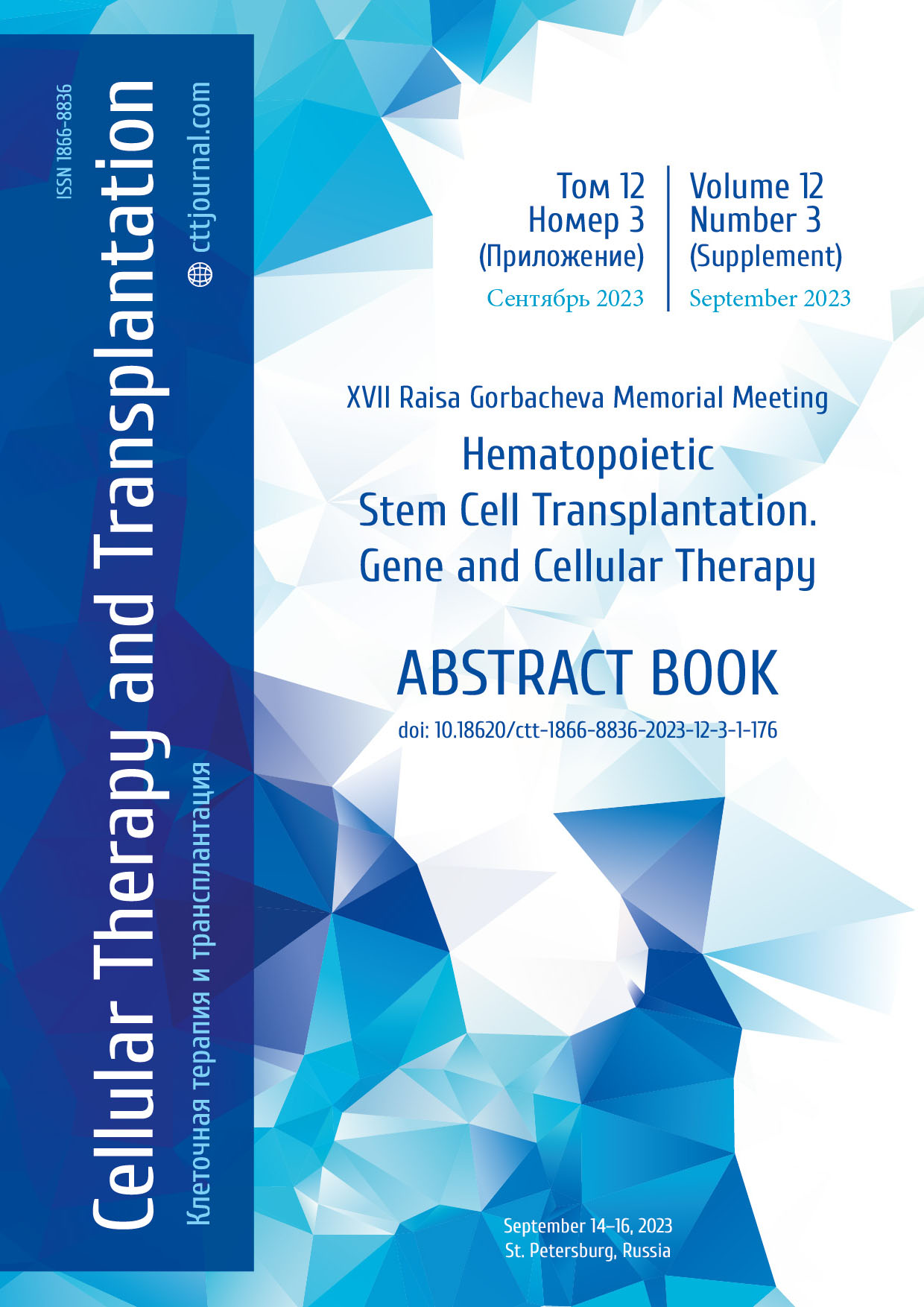LP-01. Pre-transplant therapy in a pediatric patient with relapsed primary mediastinal large B cell lymphoma: a case report
Alexander N. Galimov, Andrey V. Kozlov, Ilya V. Kazantsev, Tatiana V. Grishchenko, Vadim V. Baykov, Alexander N. Shvetsov, Ilya Y. Nikolaev, Margarita S. Khalipskaya, Polina S. Tolkunova, Olga I. Bogdanova, Natalia B. Mikhailova, Yuri A. Punanov, Alexander D. Kulagin, Ludmila S. Zubarovskaya
RM Gorbacheva Research Institute, Pavlov University, St. Petersburg, Russia
Contact: Dr. Alexander N. Galimov, phone: +7 (911) 987-48-86, e-mail: 94gal94@gmail.com
Summary
Primary mediastinal large B cell lymphoma (PMBCL) is an aggressive B-cell non-Hodgkin lymphoma that is refractory or relapsed (R-R) in 10-25%. Standard second-line chemotherapy in patients with R-R PMBCL has an unfavorable prognosis. PMBCL has specific biological markers (common expression of PD-L1, BCL2, CD20, CD30) that are potential targets for personalized therapy. Targeted therapy can theoretically improve prognosis, but the data in pediatric patients with PMBCL are limited to clinical cases.
Clinical case description
The patient was diagnosed with PMBCL (PD-L1+, BCL2+, CD20+, CD30+), S.Murphy Stage III with the involvement of neck, mediastinal, right supraclavicular, intra-abdominal lymph nodes. The disease manifested at 13 years old. The first-line therapy consisted of B-NHL BFM 2004 followed by radiotherapy with a dose of 19.8 Gy to the residual mediastinal mass. First early relapse (with the involvement of mediastinal lymph nodes, liver, spleen, kidneys, stomach, rectum, bones) was revealed one month after the end of treatment as confirmed histologically. The second- line therapy included two blocks of R-ICE and three infusions of brentuximab vedotin 1.8 mg/kg that resulted in complete response. High-dose chemotherapy (BeEAM) with auto-SCT was performed in order to consolidate remission. Second early relapse with brain lesion (left frontal lobe) developed after 4 months of auto-SCT being confirmed by histology. The third-line therapy consisted of DHAP + brentuximab vedotin 1.8 mg/kg №1 followed by two infusions of pembrolizumab 2 mg/kg and intrathecal cytarabine (50 mg every 21 days). Stabilization of the disease was achieved. However, progression of the disease with involvement of skeletal bone and brain was registered after 4 months. The fourth-line therapy included three courses of combination therapy, i.e., nivolumab 40 mg + temozolomide 100 mg/m2/day 1-5 days of the course and cytarabine 50 mg intrathecally every 21 days. Two months later, a partial response was registered. Allogeneic HSCT was recommended to consolidate the remission. Due to high risk of GvHD, nivolumab therapy was stopped 3 months before the proposed allo-SCT, and maintenance therapy was initiated with venetoclax 100 mg/day daily + cytarabine (20 mg intrathecally every 21 days) for relapse prevention. After three months of this therapy, an HLA-matched unrelated allo-SCT was performed in partial remission at the age of 15 years 7 months. Conditioning regimen included fludarabine 150 mg/m2, melphalan 140 mg/m2. GvHD prophylaxis was performed by the post-transplant cyclophosphamide, tacrolimus, mycophenolate mofetil. Bone marrow was used as a graft source; graft cellularity was 1.92×10^6 CD34+cells/kg. Complications of the post-transplantation period were represented by steroid-refractory acute GvHD Grade II (Stage 3 skin) on Days +31, +65; Salmonella infection on Day+85 with transition to chronic bacterial carriership (up to Day+300); on Day+200, meningitis of unknown etiology was diagnosed, along with poor graft function manifesting with thrombocytopenia. No data for lymphoma-related CNS lesion were obtained on Day+60, +200, +330. PET-CT data demonstrated complete remission on Day+100, +180. On Day+480, the patient is still in complete remission according to PET-CT and MRI, with full donor chimerism, without any GvHD symptoms and immunosuppressive therapy, however, with persistent moderate graft hypofunction (stage 2-3 thrombocytopenia) which required therapy with thrombopoietin receptor agonists.
Conclusion
Immune checkpoint inhibitors (ICT) may lead to remission in pediatric patients with R-R PMBC. In order to prevent relapse, the interval between the end of ICTs and allo-SCT may be filled with other targeted therapies. Consolidation therapy with allo-SCT may induce durable remission.
Keywords
Primary mediastinal large B cell lymphoma, refractory/relapsed, hematopoietic stem cell transplantation, targeted therapy, immune checkpoint inhibitors.


